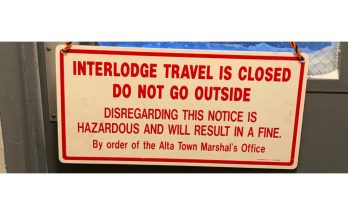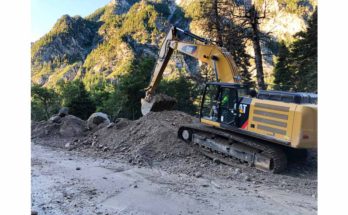Glide avalanche
Avalanche Encyclopedia, Avalanche.org
Glide occurs when the entire snowpack slowly slides as a unit on the ground. Glide avalanches can be composed of wet, moist, or almost entirely dry snow and pose a hazard that is very difficult to forecast. They are often preceded by glide cracks (full depth cracks in the snowpack), though the time between the appearance of a crack and an avalanche can vary between seconds and months.
Glide avalanches are unlikely to be triggered by a person, and many glide cracks don’t result in avalanches. That said, it’s not smart to muck around on or below visible glide cracks.
–Avalanche Encyclopedia, Avalanche.org
Blue Ice Glide Slide
An excellent example of a glide slide/avalanche occurred on April 5, 2019 on the area known as Blue Ice in the upper reaches of Broads Fork in Big Cottonwood Canyon, Utah. The slide was a natural glide on the ground surface involving about 10 feet of snow, 300 feet wide that slid approximately 2,500 vertical feet. Debris included large chunks of ice, rocks and trees.
- Blue Ice on Wasatch Backcountry Skiing map
- Avalanche Summary from Utah Avalanche Center (Summary and photos by Mark White, UAC Observer)
















